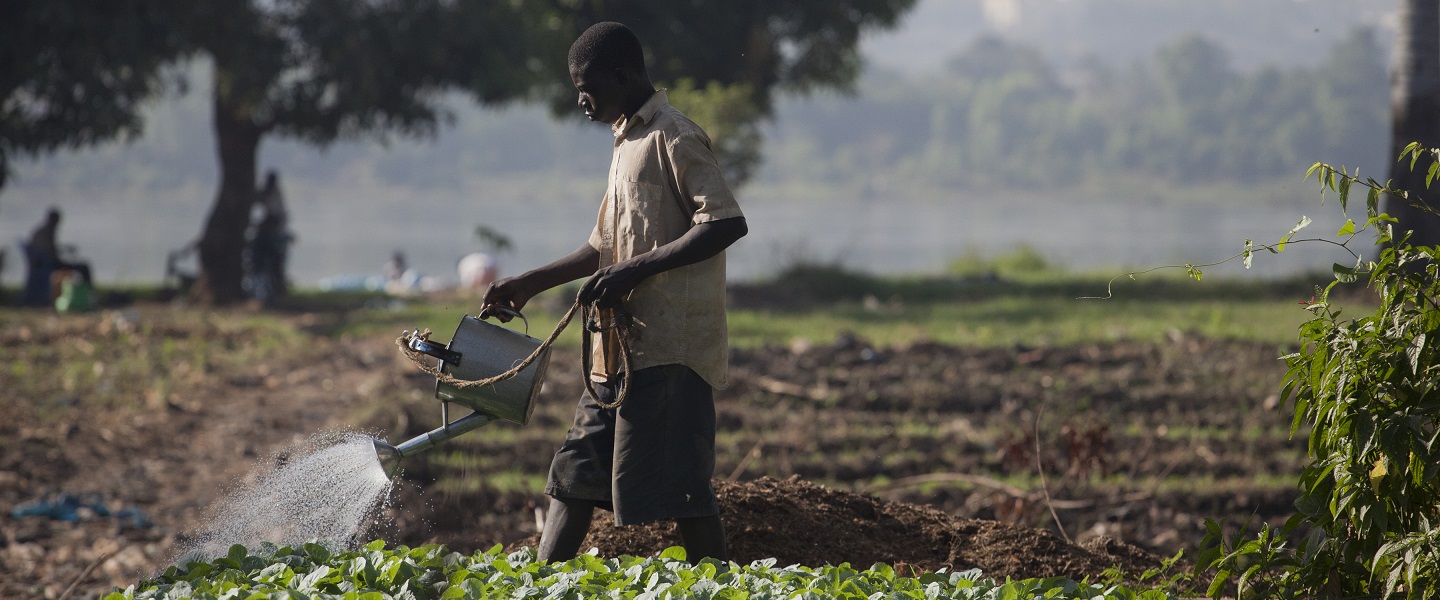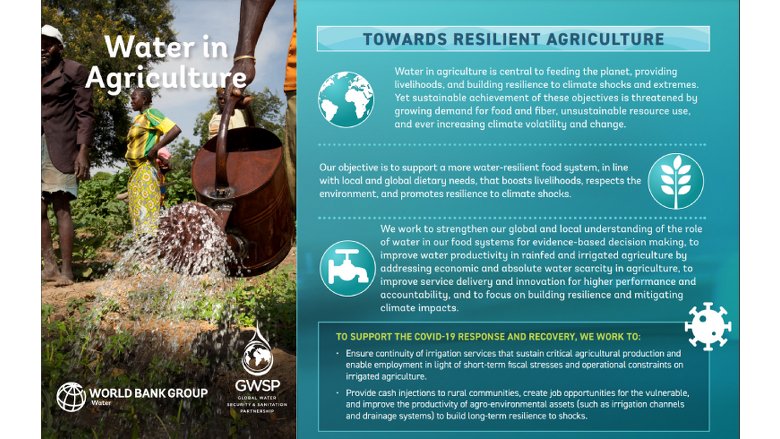Water is a critical input for agricultural production and plays an important role in food security. Irrigated agriculture represents 20 percent of the total cultivated land and contributes 40 percent of the total food produced worldwide. Irrigated agriculture is, on average, at least twice as productive per unit of land as rainfed agriculture, thereby allowing for more production intensification and crop diversification.
Due to population growth, urbanization, and climate change, competition for water resources is expected to increase, with a particular impact on agriculture. Population is expected to increase to over 10 billion by 2050, and whether urban or rural, this population will need food and fiber to meet its basic needs. Combined with the increased consumption of calories and more complex foods, which accompanies income growth in the developing world, it is estimated that agricultural production will need to expand by approximately 70% by 2050.
However, future demand on water by all sectors will require as much as 25 to 40% of water to be re-allocated from lower to higher productivity and employment activities, particularly in water stressed regions. In most cases, such reallocation is expected to come from agriculture due to its high share of water use. Currently, agriculture accounts (on average) for 70 percent of all freshwater withdrawals globally (and an even higher share of “consumptive water use” due to the evapotranspiration of crops).
The movement of water will need to be both physical and virtual. Physical movement of water can occur through changes in initial allocations of surface and groundwater resources mainly from the agricultural to urban, environmental, and industrial users. Water can also move virtually as the production of water intensive food, goods, and services is concentrated in water abundant localities and is traded to water scarce localities.
Inter-sectoral water re-allocations and significant shifts of water away from agriculture will also need to be accompanied by improvements in water use efficiency and improvements in water delivery systems. Improving the efficiency of water use in agriculture will also depend on matching of improvements main system (off-farm) with appropriate incentives for on-farm investments aiming to improve soil and water management. Such options will require improved water delivery systems to provide adequate on-demand service as well as use of advanced technologies (i.e. soil moisture sensors and satellite evapotranspiration measurements) to improve efficiency and productivity of water in agriculture.
Resolving the challenges of the future requires a thorough reconsideration of how water is managed in the agricultural sector, and how it can be repositioned in the broader context of overall water resources management and water security. Moreover, irrigation and drainage schemes, whether large or small, represent prominent spatially dispersed public works in the rural spaces. Thereby, they represent a logical vehicle for mobilizing employment opportunities into communities.
Practical Challenges for Water in Agriculture
The ability to improve water management in agriculture is typically constrained by inadequate policies, major institutional under-performance, and financing limitations. Critical public and private institutions (encompassing agricultural and water ministries, basin authorities, irrigation agencies, water users’ and farmer organizations) generally lack the enabling environment and necessary capacities to effectively carry out their functions.
For example, basin authorities often hold limited ability to enforce water allocations and to convene stakeholders. Institutions charged with developing irrigation often limit themselves to capital-intensive larger scale schemes and tend to rely on public sector-based approaches rather than developing opportunities for small-scale private financing and irrigation management. Farmers and their organizations are also often responding to highly distorted incentive frameworks in terms of water pricing and agricultural support policies, which further hinder positive developments in the sector.
Moreover, most governments and water users fail to invest adequately in the maintenance of irrigation and drainage (I&D) systems. While inadequate management and operation may play a part in the poor performance of I&D systems, it is especially the failure to sufficiently maintain systems that results in their declining performance and the subsequent need for rehabilitation. This failure to provide adequate funds for maintenance of I&D systems has resulted in the “build-neglect-rehabilitate-neglect” cycle commonly observed in the sector.
Given the existing constraints above, the agricultural water management sector is currently in the process of repositioning itself towards modern and sustainable service provision. It proposes a singular water approach on building resilient water services and sustaining water resources, while also managing risks related to broader social and economic water-related impacts. This includes transforming governance and service provision as well as supporting watershed management and greening the sector and can be achieved by providing improved incentives for innovation, reforms, and accountability.
Last Updated: Oct 05, 2022







